7 Best Plug-In Electric Radiators For the Money
The UK is accustomed to frosty winters, which is why it’s so important to have your heating system sorted out. But what if you haven’t got the budget to install central heating, or your existing system is leaving cold spots throughout the building?

A plug-in electric radiator could offer just the flexible utility you need to keep toasty warm. If you’re not sure which one to pick, stay tuned. We walk you through some of your best options below.
Further down the page, we also present a handy buyer’s guide to help inform your own comparison shopping.
To be sure, there’s no single best radiator for all uses. If you’re looking to optimise warmth and efficiency, it’s important to pick the right tool for the task.
Top-rated plug-in electric radiators (2020)
This list offers broad range of heaters to so you can make the most cost-effective purchase decision.
1. Pro Breeze 2000W Mini Ceramic Fan Heater
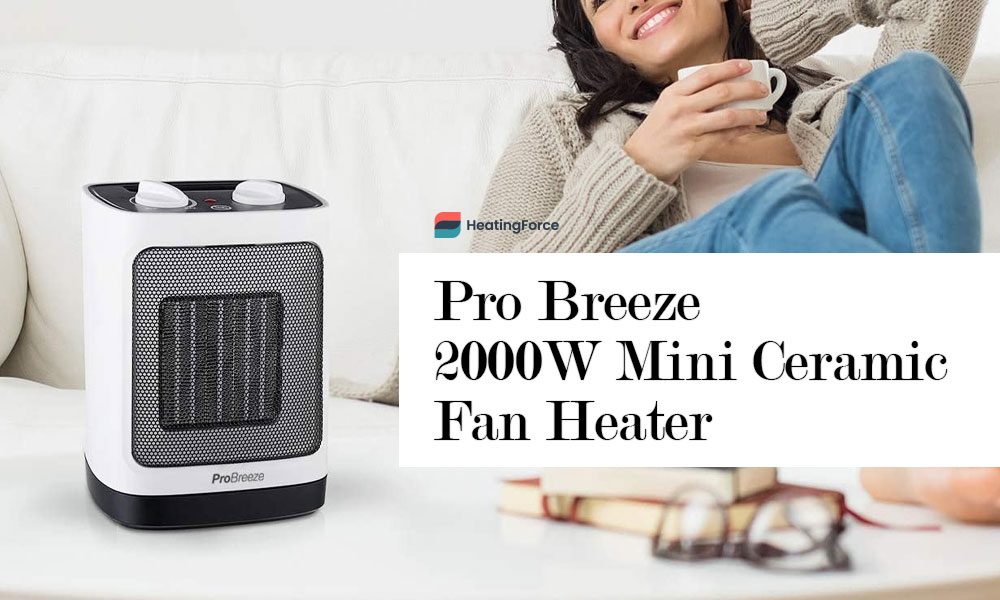
First on our list is the 2000W Mini Ceramic Fan Heater from Pro Breeze. We recommend this unit highly not because it’s the biggest or most energy efficient heather. No–instead, what you get here is amazing performance in a compact package that won’t cost you dearly.
To be sure, 2000W is a respectable amount of power. Myriad Amazon customer reviews praise this brave little box for doing a stellar job heating medium-sized rooms.
This is in large part due to the ceramic heating element, which is more energy efficient than traditional fan-blown systems. What’s more, the Mini Ceramic Fan has a 60° oscillation, allowing it to distribute heating more evenly than a stationary unit.
Pro Breeze also includes a fully adjustable thermostat for greater comfort and lower power bills. On the latter point, there’s a handy dual-mode that allows you to toggle between the highest output (2000W) and a more modest 1200W.
Weighing in at just 1.75kg and sporting an ergonomic carrying handle in-built to the frame, and it’s clear that Pro Breeze intends this unit to be used wherever you need it. In terms of safety, this plug in radiator features overheat protection as well as a tip-over switch.
These cut the electricity the moment a certain unsafe temperature threshold is breached or when the unit falls over, respectively. If there’s one knock against the Mini Ceramic Fan Heater, it’s one that applies to most units of its class: ceramic fans can lead to dry heat, which may be uncomfortable to some.
Even still, it’s hard to recommend better value for money than Pro Breeze’s lean-but-mean Mini Ceramic Fan Heater.
2. VonHaus Oil Filled Radiator 2500W
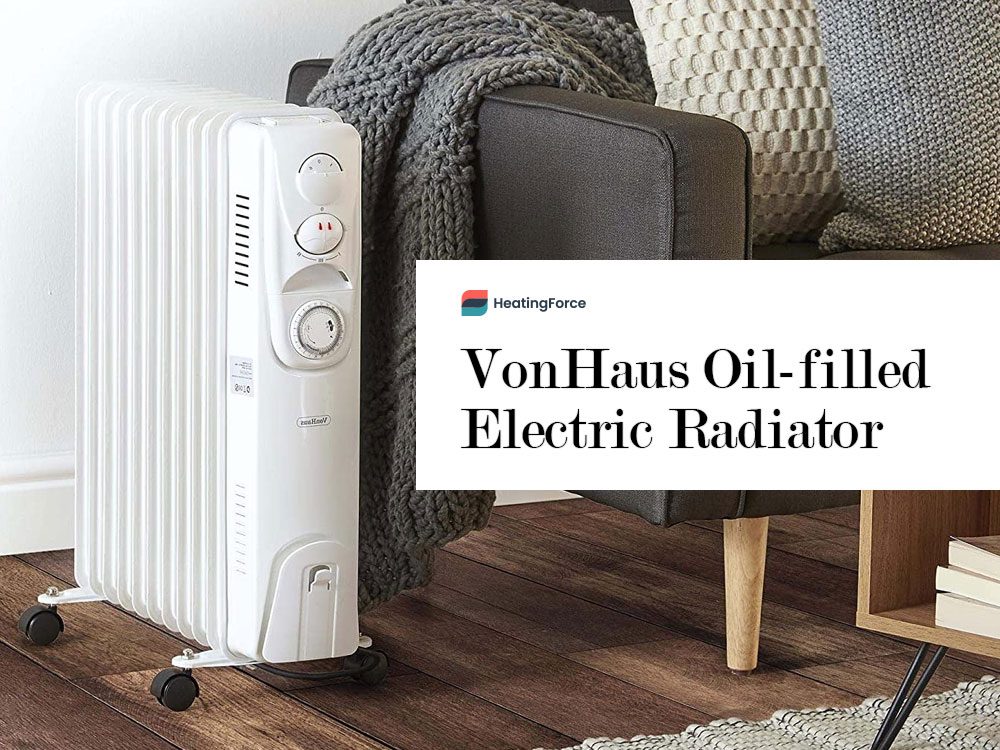
Made in the UK, the VonHaus Oil Filled Radiator caters to the needs of the domestic market. First, you get a lot of heat for not a lot of money, which can be a primary consideration when you’re on a budget or need to purchase multiple units. Indeed, 11 oil-filled fins with a 2500W heating element are more than equal to the task of evenly heating mid-large sized rooms.
What’s more, you can tailor this tool to your task with 3 discrete heat settings: 1000W, 1500W, and 2500W. The adjustable thermostat also ensures that you never waste an unneeded watt.
Oil-filled radiators are particularly attractive for those wishing to slash power bills. Once they’ve heated up, they continue to slowly radiate heat even once the power’s cut. Combined with a 24-hour timer, and you can ensure you always have heat when–and only when–you need it.
The VonHaus is neither the heaviest nor lightest in its class at 10.9kg. It’s big enough for some serious heat, but still portable enough to move from room to room. Making this task even easier are the 4 castor wheels, 1.5m plug, and built-in cable tidy to avoid accidental tripping. There’s also an automatic tip-over switch along with a thermal cut-off to protect your family and home.
The 2500W Oil Filled Radiator is a value pick, and as such it lacks some of the more sophisticated design points available elsewhere on the market. Notably, user reviews report a bit of noise upon start-up and shutoff as the heating element expands and contracts.
Others report their unit being a dud out of the box. Nevertheless, these complaints are far from the norm, and well-functioning units provide reliable service to their owners for many warm years.
3. De’Longhi Dragon 4
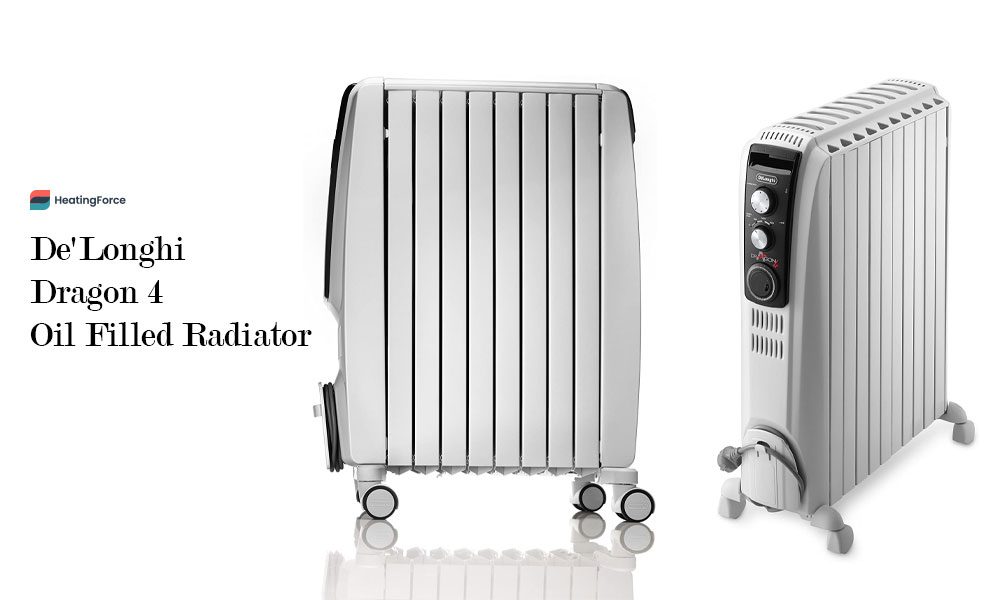
Taking a step up both in terms of price and quality, we arrive at De’Longhi’s somewhat fantastically named Dragon 4.
The first thing you’ll notice is its sleek and unique design, which forgoes tradition fins in favour of chimney-like heat cells. Whereas fins radiate circulate heat more or less evenly throughout its mass, these heat cells enclose the heat production, which causes hot air to accelerate through the vents at the top. The effect is more rapid heating.
The Dragon 4 feature 10 of these chimneys, which together represent a 25% increase in heat production over the wildly successful Dragon 3. On its own merits, the Dragon 4 features three manual heat settings rated at 1100W, 1400W, and 2500W, plus a no-nonsense thermostat for optimal operation throughout the day and night. To be sure, there’s enough power under the hood to effectively warm large rooms up to 75 cubic meters.
Those space-age heat cells are nicely rounded and form a smooth façade, making it far less likely to catch on clothing. What’s more, the four castor wheels are built into the radiator, making them less prone to failure. (It also makes your life easier out of the box since you don’t have to install them).
It isn’t the lightest on the market at 17.5kg, but the wheels together with the appropriately placed carry handle should still make it easy enough to cart around the home or office. There’s convenient cord storage, a safety thermostat, and anti-frost functionality on board as well to guarantee safe operation year-round.
Criticisms pointed at this unit are sparse and specific, though the price is a consideration. However, you get a sterling 10-year warranty from De’Longhi, ensuring that your dragon continues to (politely and noiselessly) belch heat for years to come.
4. Pro Breeze Personal Mini Heater

Pro Breeze has already made its mark on our list with its compact design, but the Personal Mini Heater takes it a step further. If you’re looking for plug-in radiator you can literally station anywhere, this is a strong contender.
It’s just 712g, and cute as a button. But don’t let its diminutive stature fool you, the Pro Breeze Personal Mini flares like a phoenix with 500W of power under the hood.
One thing to consider, however, is that the Personal Mini has a distinct upwards tilt. We might recommend that you place your heater on the floor under your desk if you want to feel the full warming effect.
Don’t worry too much about knocking it over! It has a sturdy construction, overheat protection, and an auto-off tip-over function to keep you safe as well as comfortable.
Like its larger sibling, the Personal Mini features ceramic heating for faster, more efficient thermal delivery. There’s an adjustable thermostat to keep your ambience just how you prefer, as well. And, with a generous cable length of 1 metre, you’ll be able to position this unit wherever you need it.
5. NETTA NT-2500W-OIL
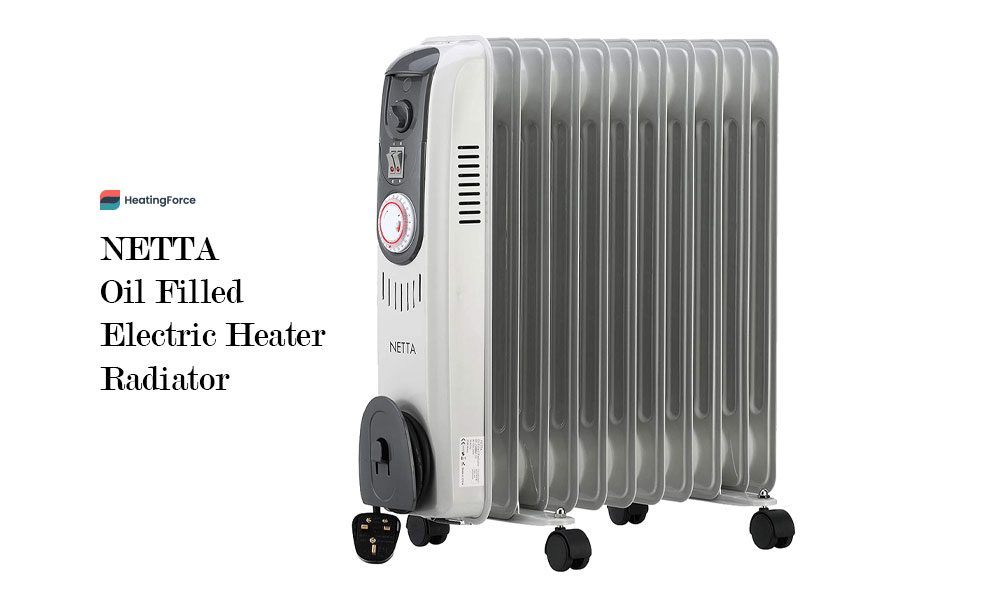
What the NETTA lacks in snappy naming, it makes up for in pure utility. This robust 11-fin, 2500W plug-in electric radiator works a treat for efficiently warming medium-to-large spaces.
While it only has two power settings, you may be drawn by the plain-language simplicity of toggling between maximum power and energy efficiency without further complication. What’s more, there’s an adjustable thermostat and 24-hour timer to ensure you never use a single excess watt.
In terms of full-size oil-filled radiators, the NT-2500W-OIL is fairly lean at 11.3kg. However, we couldn’t help but wish the castor wheels had come pre-attached, as nearly 2 stone is a fair amount to heft up for self-installation.
Regardless of this small complaint, this is a solid workhorse of a unit that is mobile enough with its integrated carry handle. We appreciate that there’s an expansive 1.5m cable for optimal positioning. There’s also an included tidy to ensure you aren’t tripping over it in the dark.
On the matter of safety, there’s overheat protection onboard as well. NETTA stands by their products, so if you’re worried somethings gone wrong with your unit’s integrity, they offer a 1-year warranty to get it taken care of fast.
6. Dimplex OFRC20C Oil-Free Column
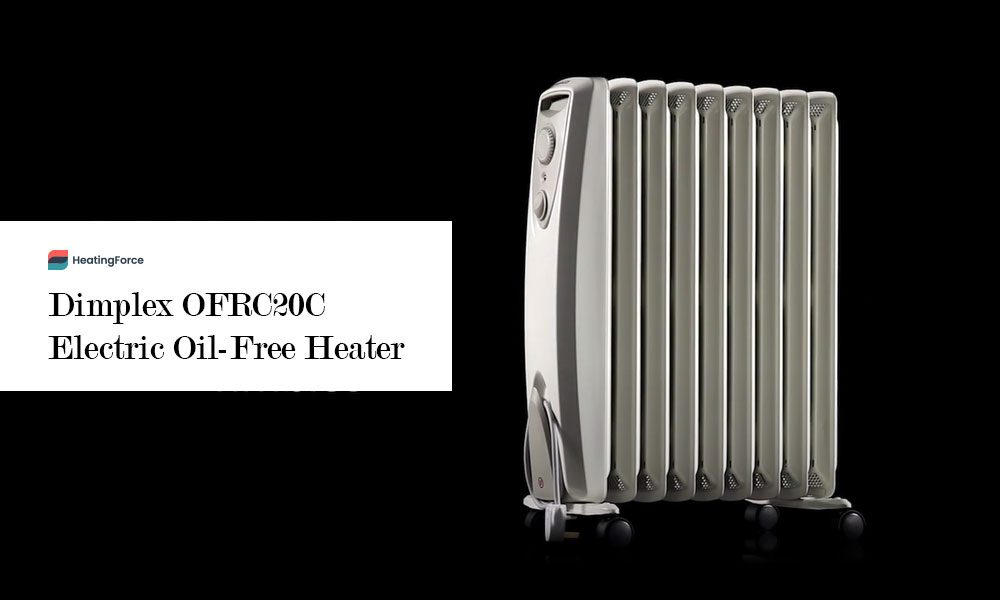
The Dimplex Oil-Free Column may not offer the greatest wattage per pound. But, you’ll get a tight, no-nonsense package that just works. Rated at 2000W, you can toggle between a high and low setting to fit your needs, then fine tune day-long output with the adjustable thermostat.
While the Dimplex OFRC20C presents itself as a traditional finned electric radiator, there’s a secret under the hood: absolutely no oil! Why does this matter? Essentially, oil takes quite a while to heat up, and draws on a fair amount of energy to reach a stabilising point, as well.
Removing it from the equation offers a much quicker heat-up time, which could be crucial when you’re coming in frozen stiff in lieu of a roaring fire.
To be sure, this is a trade-off, as the Dimplex Oil-Free Column will not be as efficient for continuous heating, despite what their own adverts claim. Oil-filled radiators, once hot, require very little in the way of maintaining that heat output. You just need to make sure you know what you need, and suit the tool to the task.
On its own merits, the Dimplex is a capable, safe machine. What’s more, the manufacturer stands by their product with a generous 3-year warranty. At 9.8kg, it’s a cinch to manoeuvre around the home or office on its sturdy castor wheels.
The cable is on the short side, however, so be aware of that limitation. Some user reviews also mention a slight odour on new units that burns off after a few uses, and the exposed heating elements can get a bit clangy when turning on and off. Nevertheless, if you’re looking for something you can simply turn on for quick, effective heating, you’ll be hard pressed to find a better buy.
7. Adax Neo
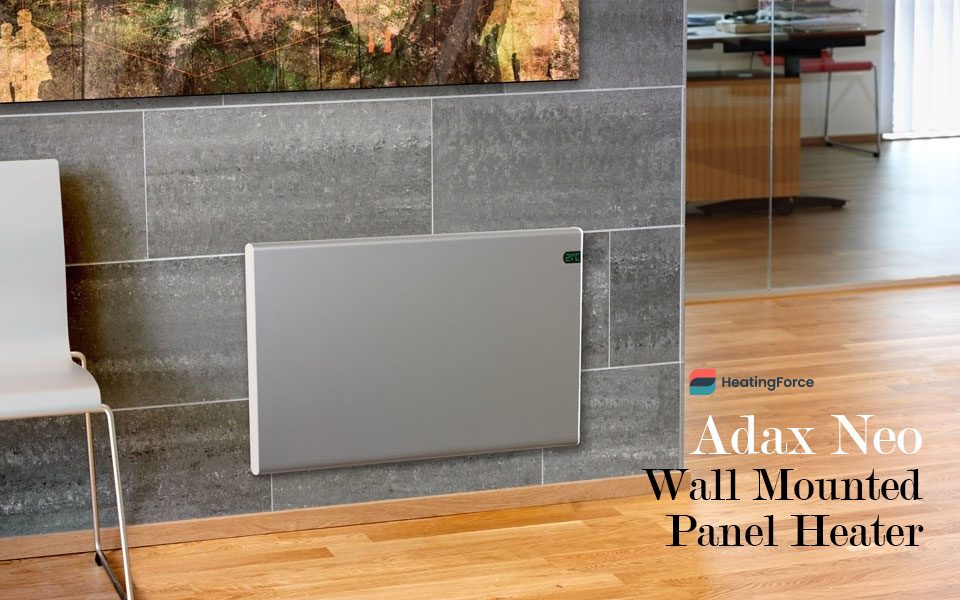
Rounding out our list is by far the priciest unit, the Adax Neo. But as you can see, this isn’t your ordinary plug-in radiator, and does a lot to justify its cost. First, its Nordic stylings are immediately apparent in its flat panel construction that is at once sleek and simple.
While there is a wide range of Neo models at different power ratings, they all sport the same super-slim 84mm depth. What’s more, the Neo can be wall-mounted or set upon a floor mounting stand for maximum flexibility. Just be aware that if you spring for the higher-power (and thus, wider) models, you’ll begin to feel the limit of your power cable, and will want to install your unit to the left of the plug.
On the subject of models, you’ll have anything from 400W (@ 486mm length) to 2000W (@ 1394mm length) to choose from. Each version is similarly equipped with a gorgeous LCD temperature display; handy digital thermostat you can control from 6-35°C; 3 optional timing modes designed for the home, office, or a cabin space; IP20 water proofing (though we don’t recommend this unit for the bathroom), and a 24-hour, 7-day timer for optimal control throughout your week.
Not enough? The convection-heating Neo employs specially treated heating elements, which prevent dust and oxygen particles from being burnt off–ideal for asthma and allergy sufferers.
Of course, standard safety features such as overheat protection are fully integrated, as is an all-important child lock to prevent unintended (and possibly dangerous) usage.
There are no moving parts, so you won’t find any extraneous smells or sounds emitting from your Adax. With an incredible 5-year warranty and 6 colours to choose from, you can count on finding the perfect unit to serve through the long-haul.
Buyer’s Guide for Plug-in Electric Radiators
We made our recommendations based on a variety of important factors. If you’d prefer to continue you’re comparison shopping beyond this article, we’re happy to assist you. Here are a few key points to keep in mind:
Budget
This may seem obvious, but your budget should be a foremost consideration. It’s not just how expensive a radiator is upfront, but how much power it will continue to draw over the course of its useful life. Plus, there’s maintenance and installation to consider in the sum total.
Ideally, you’d be willing to pay a little more upfront in order to ensure a good build quality, efficient design, and generous manufacturer warranty. However, not every application in your home or office requires a heater that you buy for life, so depending on your needs you may be able to compromise longevity for some immediate price reduction.
Maintenance
Plug-in electric heaters are typically quite simple, mechanically speaking, and thus should not incur too much cost in maintenance. However, a poor quality heater could turn out to be a lemon sooner rather than later, and depending on how much you spent, it might be more cost-effective to replace the entire radiator than shell out for parts and repair.
Typically, the components which wear out the fastest are electrical: plugs, dials, heating elements top the list. If you find a unit which seems at all flimsy on these points, it’s probably best to avoid it. If your unit has a fan, the motor may eventually wear out as well. Heaters from big names will often have a robust after-market of parts to choose from. more niche or obscure names may simply be designed for self-obsolescence.
Categorically speaking, plug-in radiators won’t generally have installation costs associated, but it may be a consideration for larger wall-mounted units you’d rather not bother with yourself.
In all cases of maintenance, a solid warranty will often pay for itself in staving off the cost of expensive and untimely repairs.
Usability
Is the design of the radiator you’re considering so esoteric and chic; you need an advanced engineering degree to decode basic operation? Consider it a hard pass. Most reputable companies go to great lengths to ensure that their units are easy to operate, even without instructions. While analogue controls tend to be more self-explanatory than their digital counterparts, a good instruction manual should make both equally simple to use.
The biggest stumbling block for most people is using the automatic timer and thermostat. Once again, simplicity wins out over advanced programmatic functionality. You don’t need your radiator to do your taxes! It just needs to turn on and off at predictable intervals that you can easily control. Settle for nothing less.
Utility
Do you need your radiator to do one thing very well? Or, do you need it for several different applications around the home or office? Typically speaking, if you need a more or less permanent fixture that you have the option to move, bigger may be better. Larger radiators, especially oil-filled ones, retain heat better and thus warm your room for less energy consumption once it’s fully fired up. If you’re just looking to set it and forget it, make sure efficiency is your top priority.
Now, why would you ever NOT want the most efficient heater you can get? Consider a situation where you’d pack up your radiator and move it from place to place with some frequency.
A monolithic, 15kg column of oil-filled steel that sips energy and is slow to heat up may not be your best pick. Instead, something like a small ceramic-fan radiator or non-oil filled radiator may serve you far better. They’re lighter to carry, and produce a comfortable temperature much faster. You’ll sacrifice some efficiency, but you probably won’t be running it all day, either.
Remember, larger, oil-filled radiators actually do consume a significant amount of energy upfront. But after they raise the temperature of the oil, consumption drops off dramatically.
Constantly moving such a radiator around means you will be drawing far more energy to repeatedly climb back up to that stabilising temperature, without having the benefit of letting it sit at low-power mode. A less efficient, faster heater will actually draw less power overall in the same application.
Safety
Obviously, any device which includes heating elements should be subject to scrutiny in terms of safety. If your plug-in radiator makes no provision to guard against the what-ifs of life, it has no business being in your home–even if it does good work of warming you up.
Always ensure your radiator has a thermal cut-off on board. This simple system acts as a sort of breaker for when your unit gets too hot–which can happen for reasons including faulty electronics or simple operator error. If you ever intend to leave the room in which your heater sits, this feature is an absolute necessity.
An underestimated feature is anti-frost protection. While your radiator freezing over in the winter may not put you at immediate risk of fire, shock or burns, it can be even worse. After all, on bitter cold nights, your plug-in electric radiator may be all that stands between you and icy malaise. If it’s iced over, it won’t work, and you may find yourself as frozen as your heater.
Don’t sleep on tip-over protection, either, especially if you have pets or children. A perfectly benign heater can turn into a deadly threat when knocked onto its side, where it can come into contact with carpet, laundry, upholstery, and other flammable material. Tip-over switches detect gyroscopic deviations, and immediately cut the power upon detection of a fall.
Finally, if you suffer from allergies, you may well consider avoiding units which produce dry heat or which have open elements to burn off oxygen and dust particles. Such airborne residue can greatly exacerbate underlying health conditions, so avoid blown-air models in favour of more passive finned radiators.
Parting words
There are many reasons to go with a plug-in electric radiator. These include a relatively low purchase cost, flexibility in positioning around the home or office, and the typical lack of installation fees. Just the same, there is no one-size-fits-all solution, and you’d do well to do plenty of research before making your purchase.
Today, we’ve provided reviews on some of the most popular electric heaters across a variety of applications and price points. Even if you find a unit you absolutely love on our list, double-check our buyer’s guide to meet all your needs.
Got any questions on a plug-in electric radiator that we’ve recommended? Leave a comment below!